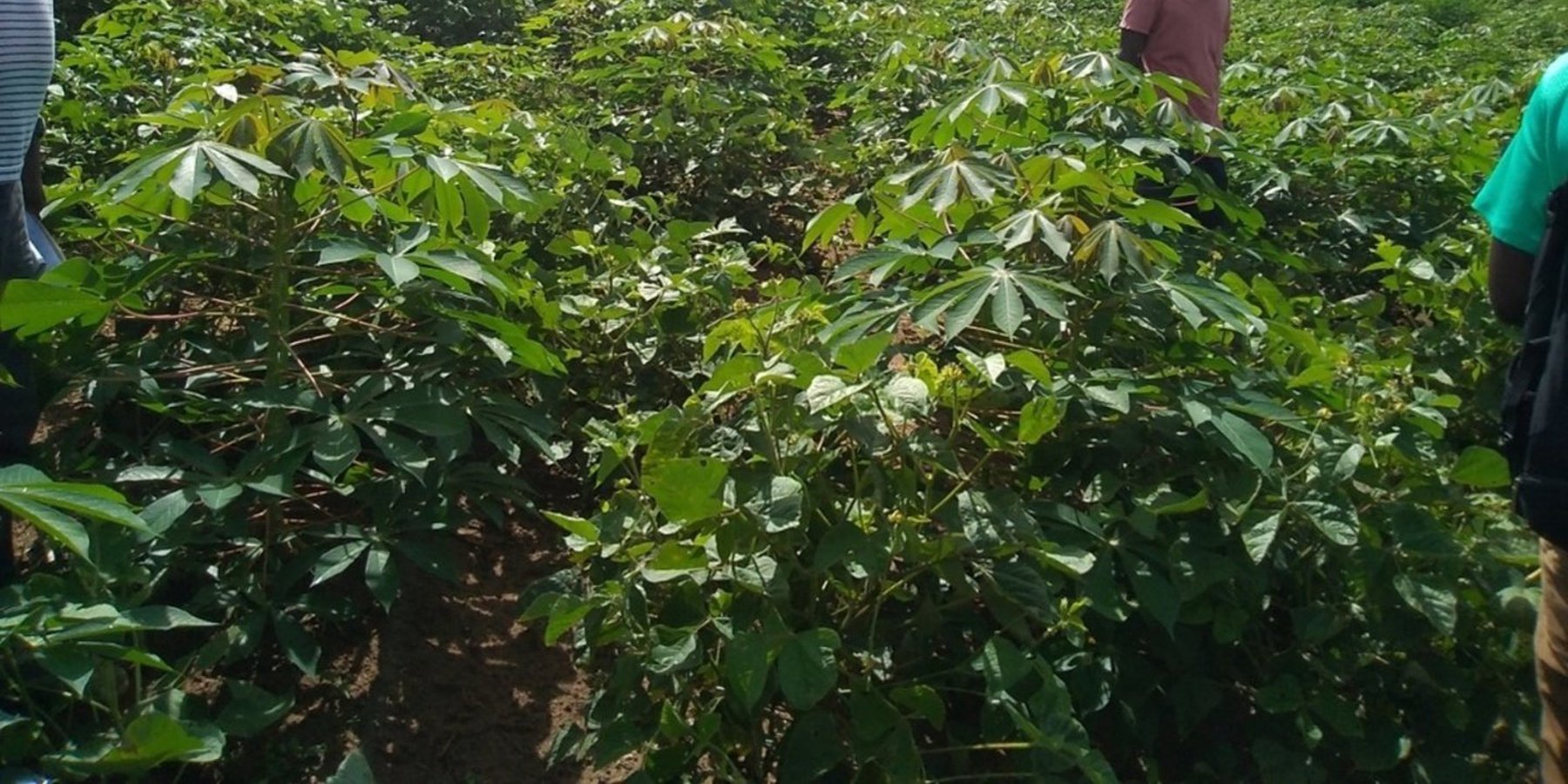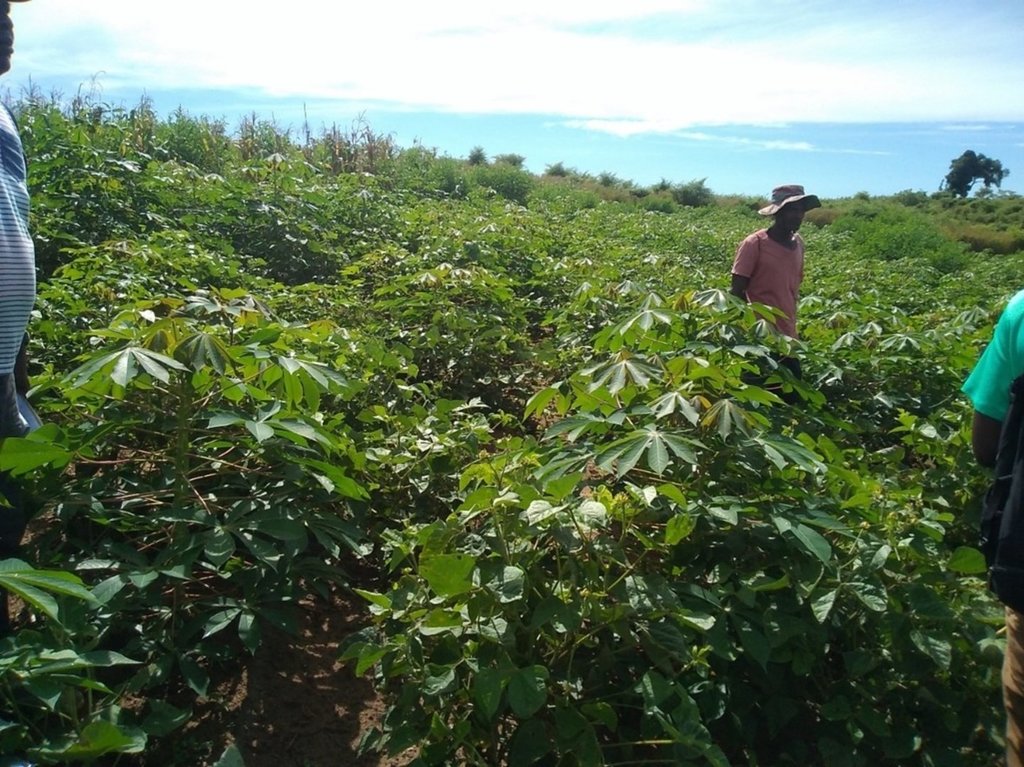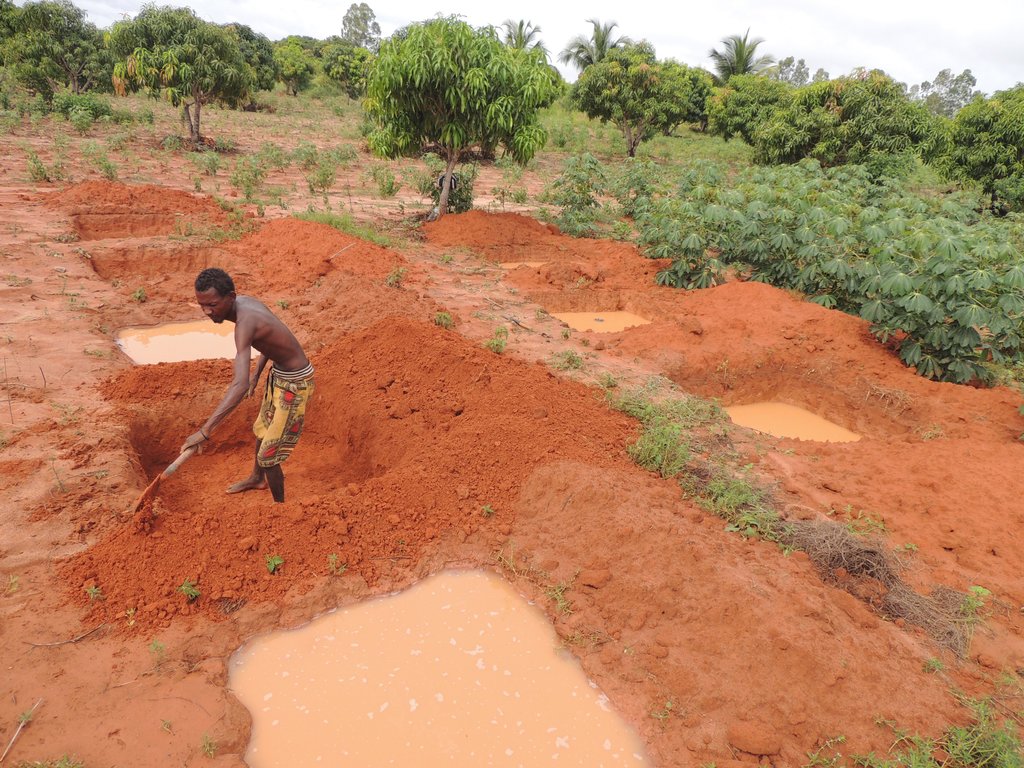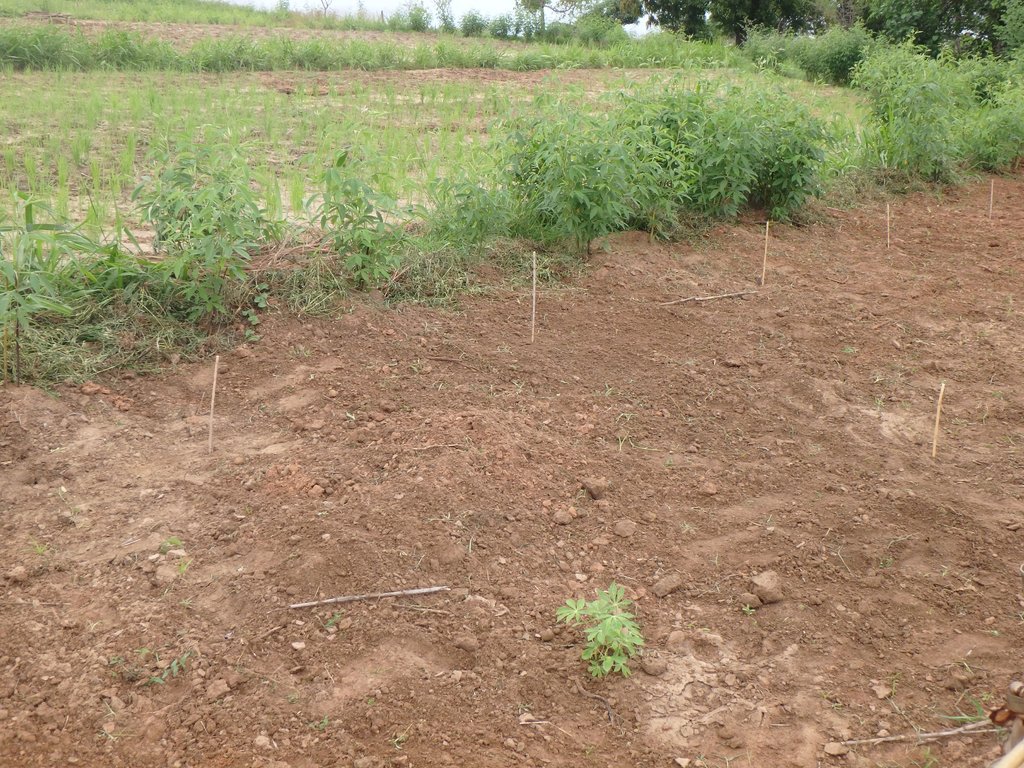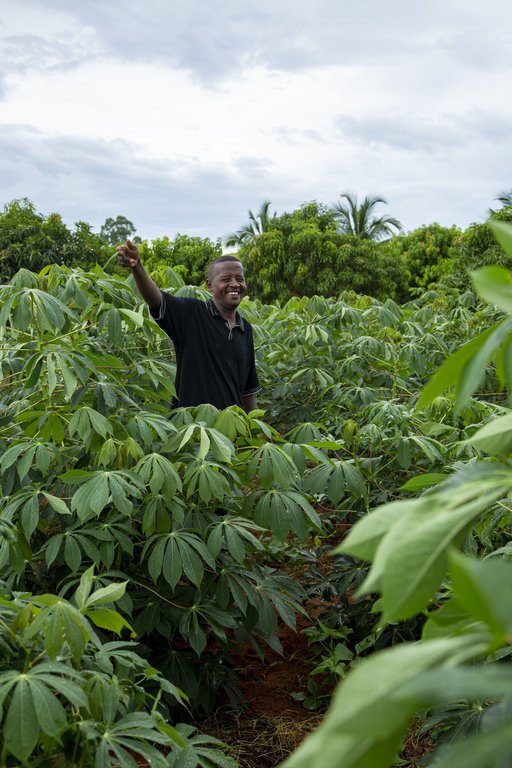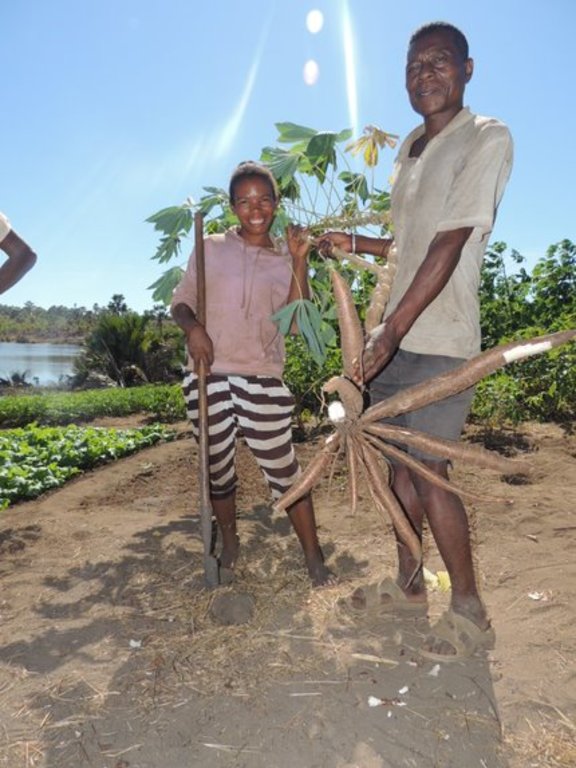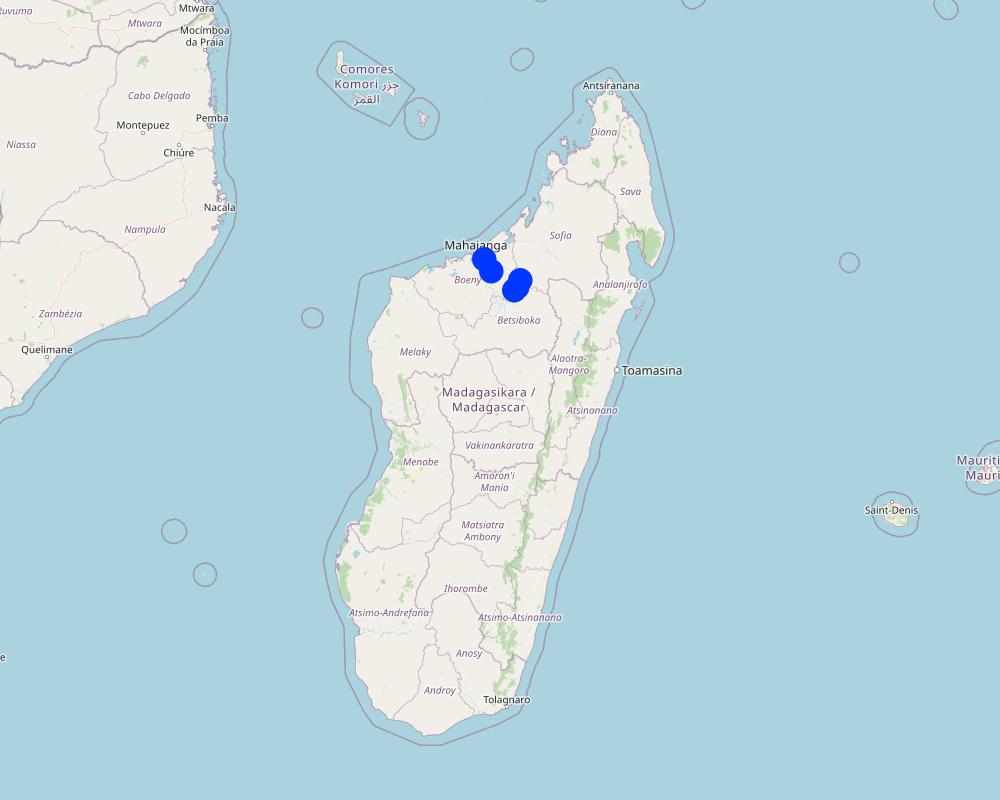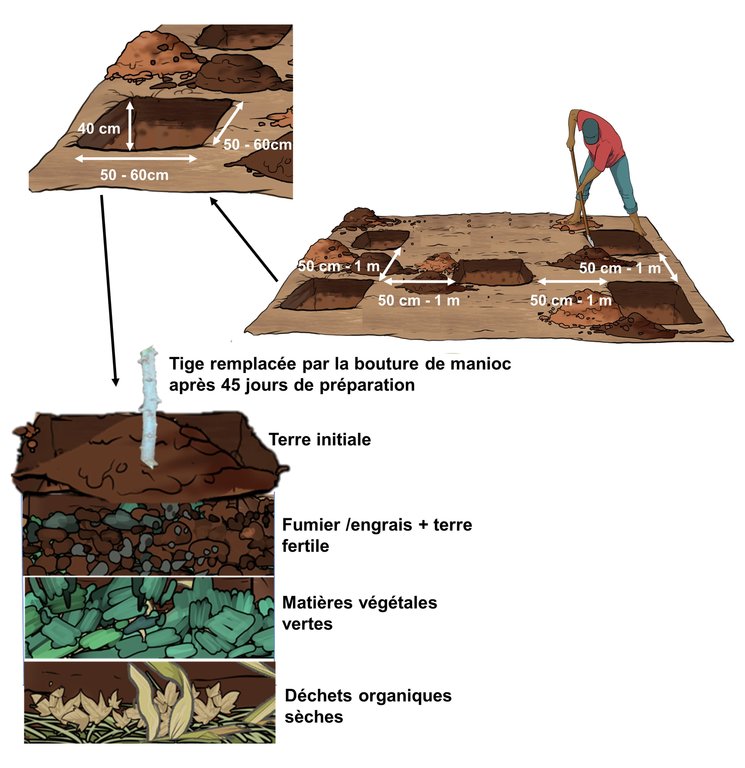Basket Composting [Madagascar]
- Creation:
- Update:
- Compiler: Harifidy RAKOTO RATSIMBA
- Editors: Felana Nantenaina RAMALASON, Dimby RAHERINJATOVOARISON, Siagbé Golli, Tahiry Ravivonandrasana, Natacha Rabeary, Tabitha Nekesa, Ahmadou Gaye
- Reviewers: William Critchley, Rima Mekdaschi Studer
Fambolena mangahazo, Basket compost
technologies_6475 - Madagascar
View sections
Expand all Collapse all1. General information
1.2 Contact details of resource persons and institutions involved in the assessment and documentation of the Technology
Key resource person(s)
land user:
TORANO Augustin
Madagascar
land user:
RABOTOZAFIARIMBOLA Samuelson
Madagascar
land user:
RAZANAPELA Jean Baptiste
Madagascar
land user:
RAZAFIMANDIMBY Pascal
Madagascar
land user:
RAVOLOLONINDRIANA Marie Lucie
Madagascar
Name of project which facilitated the documentation/ evaluation of the Technology (if relevant)
Soil protection and rehabilitation for food security (ProSo(i)l)Name of the institution(s) which facilitated the documentation/ evaluation of the Technology (if relevant)
Deutsche Gesellschaft für Internationale Zusammenarbeit (GIZ)1.3 Conditions regarding the use of data documented through WOCAT
The compiler and key resource person(s) accept the conditions regarding the use of data documented through WOCAT:
Yes
1.4 Declaration on sustainability of the described Technology
Is the Technology described here problematic with regard to land degradation, so that it cannot be declared a sustainable land management technology?
No
2. Description of the SLM Technology
2.1 Short description of the Technology
Definition of the Technology:
Basket composting enhances the yield of tubers such as cassava by producing concentrated organic matter that adds fertility to the soil. This technique proves to be highly advantageous for small-scale farmers with limited land, allowing them to maximize production within a confined space.
2.2 Detailed description of the Technology
Description:
Basket composting is an agricultural intensification method designed to enhance the yield of tubers such as cassava. The compost is concentrated organic matter made from a mixture of dry grass, green matter and, if possible, a little animal dung. The best land for cassava is close to homesteads and away from livestock. This technology maximizes cassava production per plant. It improves soil fertility and helps restore degraded soils. Planting holes should be 40 cm deep and 60 cm x 60 cm wide. Each hole should be spaced 1 m apart. Basket compost is prepared as follows:
- fill half the hole with dry organic matter, then pack it tightly;
- add a layer of chopped-up green matter; the smaller it is chopped, the faster it decomposes;
- add a 10 cm thick layer of fertilizer mixed with fertile soil;
- cover with the top layer of original soil to form a mound;
- mark the centre of the hole with a rod and place a heap of fertilizer and fertile soil before planting a cassava stem cutting;
- leave the hole for 45 days;
- plant the cassava stem cutting vertically in the place of the original stem, pushing 3 buds of the cutting into the soil;
- compact the soil around the stem cutting.
The cassava stem cutting to be planted must be in good health, free from disease, especially mosaic. It should be mature, neither too young nor too old, leafless, with 4 to 5 buds, and at least 20 cm long. When the cassava plant reaches 30 cm in height, select the best stem (main stem) and eliminate the other stems (secondary stems).
The main inputs required to set up basket compost are :
- dry organic matter: rice straw, weeds, other waste;
- green plant matter: acacia leaves, banana leaves, green grasses, etc;
- fertile soil mixed with animal droppings (manure).
Basket composting maximizes tuber production; the yield achieved is from 5 kg to 25 kg of cassava per plant. The challenges associated with this technology lie in the harvesting process, transportation, and the procurement of organic materials (plant matter and animal manure). Although labour-intensive, this technology leads to high productivity within a limited area, making it well suited to small-scale farmers.
2.3 Photos of the Technology
2.5 Country/ region/ locations where the Technology has been applied and which are covered by this assessment
Country:
Madagascar
Region/ State/ Province:
Boeny
Further specification of location:
Ambondromamy, Belobaka, Marovoay Banlieue, Manerinerina
Specify the spread of the Technology:
- applied at specific points/ concentrated on a small area
Is/are the technology site(s) located in a permanently protected area?
No
Map
×2.6 Date of implementation
Indicate year of implementation:
2019
If precise year is not known, indicate approximate date:
- less than 10 years ago (recently)
2.7 Introduction of the Technology
Specify how the Technology was introduced:
- through projects/ external interventions
Comments (type of project, etc.):
GIZ Prosol Madagascar
3. Classification of the SLM Technology
3.1 Main purpose(s) of the Technology
- improve production
- reduce, prevent, restore land degradation
- preserve/ improve biodiversity
- adapt to climate change/ extremes and its impacts
3.2 Current land use type(s) where the Technology is applied
Land use mixed within the same land unit:
Yes
Specify mixed land use (crops/ grazing/ trees):
- Agroforestry

Cropland
- Annual cropping
Annual cropping - Specify crops:
- root/tuber crops - cassava
- Vigna radiata
Number of growing seasons per year:
- 1
Is intercropping practiced?
No
Is crop rotation practiced?
Yes
If yes, specify:
cassava/pumpkin, cassava/maize
3.3 Has land use changed due to the implementation of the Technology?
Has land use changed due to the implementation of the Technology?
- No (Continue with question 3.4)
3.4 Water supply
Water supply for the land on which the Technology is applied:
- rainfed
3.5 SLM group to which the Technology belongs
- improved ground/ vegetation cover
- integrated soil fertility management
3.6 SLM measures comprising the Technology

agronomic measures
- A2: Organic matter/ soil fertility
- A4: Subsurface treatment
3.7 Main types of land degradation addressed by the Technology

chemical soil deterioration
- Cn: fertility decline and reduced organic matter content (not caused by erosion)
3.8 Prevention, reduction, or restoration of land degradation
Specify the goal of the Technology with regard to land degradation:
- reduce land degradation
- restore/ rehabilitate severely degraded land
4. Technical specifications, implementation activities, inputs, and costs
4.1 Technical drawing of the Technology
Technical specifications (related to technical drawing):
Compost basket holes should have a minimum depth of 40 cm and a width ranging from 50 to 60 cm. The spacing between these holes should be maintained at 50 cm to 1 m.
Half the hole should be filled with dry organic matter, which is then compacted into a mound. A layer of well-chopped green matter is then laid down, followed by a layer of animal dung mixed with fertile soil. The entire setup is covered with the top layer of the original soil to create a raised ridge. A stem will serve as a marker for the hole, and after 45 days when the basket compost is ready, it will be replaced by cassava cuttings.
Author:
GIZ Prosol Madagascar
Date:
01/02/2023
4.2 General information regarding the calculation of inputs and costs
Specify how costs and inputs were calculated:
- per Technology area
Indicate size and area unit:
1 hectare
other/ national currency (specify):
Ariary
If relevant, indicate exchange rate from USD to local currency (e.g. 1 USD = 79.9 Brazilian Real): 1 USD =:
4300.0
Indicate average wage cost of hired labour per day:
5000
4.3 Establishment activities
| Activity | Timing (season) | |
|---|---|---|
| 1. | Garbage and plant debris collection | All year round |
| 2. | Hole digging | August-January |
| 3. | Preparing compost baskets | November-January |
| 4. | Planting cassava cuttings | After 40 days of basket compost preparation |
4.4 Costs and inputs needed for establishment
| Specify input | Unit | Quantity | Costs per Unit | Total costs per input | % of costs borne by land users | |
|---|---|---|---|---|---|---|
| Labour | Digging | man-days | 168.0 | 10000.0 | 1680000.0 | 100.0 |
| Labour | Compost basket transportation and preparation | man-days | 50.0 | 5000.0 | 250000.0 | 100.0 |
| Equipment | Wheelbarrow | number | 1.0 | 110000.0 | 110000.0 | |
| Plant material | Cassava cuttings | number | 615.0 | 200.0 | 123000.0 | |
| Fertilizers and biocides | Yard manure | bag | 350.0 | 1200.0 | 420000.0 | |
| Total costs for establishment of the Technology | 2583000.0 | |||||
| Total costs for establishment of the Technology in USD | 600.7 | |||||
If land user bore less than 100% of costs, indicate who covered the remaining costs:
The Prosol Project has provided equipment such as wheelbarrows, shovels and cassava cuttings.
Comments:
During a single growing season, a farmer can create an average of 100 compost basket holes, covering approximately 10 ares. After the cassava harvest, the plot retains its fertility and becomes suitable for cultivating other crops. To prevent soil exhaustion, it is recommended to allow the land to fallow for three years after two consecutive years of cassava cultivation. Following the fallow period or on nutrient-depleted soil, basket compost is reapplied for a new cassava crop. The provided prices are derived from field surveys and endorsed by SLM experts.
4.5 Maintenance/ recurrent activities
| Activity | Timing/ frequency | |
|---|---|---|
| 1. | Protection against livestock grazing | rainy season |
| 2. | Weeding | rainy season (twice, one month apart) |
| 3. | Phytosanitary treatments | from planting, once a week for 8 months |
4.6 Costs and inputs needed for maintenance/ recurrent activities (per year)
| Specify input | Unit | Quantity | Costs per Unit | Total costs per input | % of costs borne by land users | |
|---|---|---|---|---|---|---|
| Labour | Weeding | man-days | 10.0 | 5000.0 | 50000.0 | 100.0 |
| Total costs for maintenance of the Technology | 50000.0 | |||||
| Total costs for maintenance of the Technology in USD | 11.63 | |||||
5. Natural and human environment
5.1 Climate
Annual rainfall
- < 250 mm
- 251-500 mm
- 501-750 mm
- 751-1,000 mm
- 1,001-1,500 mm
- 1,501-2,000 mm
- 2,001-3,000 mm
- 3,001-4,000 mm
- > 4,000 mm
Specify average annual rainfall (if known), in mm:
1400.00
Agro-climatic zone
- sub-humid
5.2 Topography
Slopes on average:
- flat (0-2%)
- gentle (3-5%)
- moderate (6-10%)
- rolling (11-15%)
- hilly (16-30%)
- steep (31-60%)
- very steep (>60%)
Landforms:
- plateau/plains
- ridges
- mountain slopes
- hill slopes
- footslopes
- valley floors
Altitudinal zone:
- 0-100 m a.s.l.
- 101-500 m a.s.l.
- 501-1,000 m a.s.l.
- 1,001-1,500 m a.s.l.
- 1,501-2,000 m a.s.l.
- 2,001-2,500 m a.s.l.
- 2,501-3,000 m a.s.l.
- 3,001-4,000 m a.s.l.
- > 4,000 m a.s.l.
Indicate if the Technology is specifically applied in:
- not relevant
5.3 Soils
Soil depth on average:
- very shallow (0-20 cm)
- shallow (21-50 cm)
- moderately deep (51-80 cm)
- deep (81-120 cm)
- very deep (> 120 cm)
Soil texture (topsoil):
- medium (loamy, silty)
Soil texture (> 20 cm below surface):
- medium (loamy, silty)
- fine/ heavy (clay)
Topsoil organic matter:
- medium (1-3%)
5.4 Water availability and quality
Ground water table:
5-50 m
Availability of surface water:
medium
Water quality (untreated):
poor drinking water (treatment required)
Water quality refers to:
ground water
Is water salinity a problem?
No
Is flooding of the area occurring?
No
5.5 Biodiversity
Species diversity:
- medium
Habitat diversity:
- low
Comments and further specifications on biodiversity:
This region boasts a diverse array of animal and plant species, with some being native. However, this biodiversity is relatively moderate when compared to other parts of the island. In terms of habitats, approximately 20% of the region comprises suitable environments for supporting this biodiversity, including forests, water bodies, mangroves, and more, although this percentage remains fairly low.
5.6 Characteristics of land users applying the Technology
Sedentary or nomadic:
- Sedentary
Market orientation of production system:
- subsistence (self-supply)
- mixed (subsistence/ commercial)
Off-farm income:
- less than 10% of all income
- 10-50% of all income
Relative level of wealth:
- poor
- average
Individuals or groups:
- individual/ household
- groups/ community
Level of mechanization:
- manual work
- animal traction
Gender:
- women
- men
Age of land users:
- youth
- middle-aged
5.7 Average area of land used by land users applying the Technology
- < 0.5 ha
- 0.5-1 ha
- 1-2 ha
- 2-5 ha
- 5-15 ha
- 15-50 ha
- 50-100 ha
- 100-500 ha
- 500-1,000 ha
- 1,000-10,000 ha
- > 10,000 ha
Is this considered small-, medium- or large-scale (referring to local context)?
- small-scale
5.8 Land ownership, land use rights, and water use rights
Land ownership:
- individual, not titled
Land use rights:
- individual
Water use rights:
- individual
Are land use rights based on a traditional legal system?
Yes
Specify:
Most villagers can identify the cultivated lands of their fellow community members.
5.9 Access to services and infrastructure
health:
- poor
- moderate
- good
education:
- poor
- moderate
- good
technical assistance:
- poor
- moderate
- good
employment (e.g. off-farm):
- poor
- moderate
- good
markets:
- poor
- moderate
- good
energy:
- poor
- moderate
- good
roads and transport:
- poor
- moderate
- good
drinking water and sanitation:
- poor
- moderate
- good
financial services:
- poor
- moderate
- good
6. Impacts and concluding statements
6.1 On-site impacts the Technology has shown
Socio-economic impacts
Production
crop production
Quantity before SLM:
1 kg/pieds
Quantity after SLM:
2 - 3 kg/pieds
crop quality
Income and costs
expenses on agricultural inputs
farm income
workload
Socio-cultural impacts
food security/ self-sufficiency
Specify assessment of on-site impacts (measurements):
These are estimates made by the farmers interviewed.
6.2 Off-site impacts the Technology has shown
Specify assessment of off-site impacts (measurements):
not applicable
6.3 Exposure and sensitivity of the Technology to gradual climate change and climate-related extremes/ disasters (as perceived by land users)
Gradual climate change
Gradual climate change
| Season | increase or decrease | How does the Technology cope with it? | |
|---|---|---|---|
| seasonal rainfall | wet/ rainy season | decrease | moderately |
6.4 Cost-benefit analysis
How do the benefits compare with the establishment costs (from land users’ perspective)?
Short-term returns:
positive
Long-term returns:
positive
How do the benefits compare with the maintenance/ recurrent costs (from land users' perspective)?
Short-term returns:
positive
Long-term returns:
positive
6.5 Adoption of the Technology
- single cases/ experimental
6.6 Adaptation
Has the Technology been modified recently to adapt to changing conditions?
No
6.7 Strengths/ advantages/ opportunities of the Technology
| Strengths/ advantages/ opportunities in the land user’s view |
|---|
| Improved soil fertility |
| Increased production |
6.8 Weaknesses/ disadvantages/ risks of the Technology and ways of overcoming them
| Weaknesses/ disadvantages/ risks in the land user’s view | How can they be overcome? |
|---|---|
| Extremely heavy workload | Requirement for external workforce |
| Availability of raw materials (green materials in the dry season, manure, etc.). | Year-round collection of raw materials |
7. References and links
7.1 Methods/ sources of information
- field visits, field surveys
Five (5) fields visited
- interviews with land users
Five (5) farmers interviewed
- compilation from reports and other existing documentation
GIZ ProSoil Madagascar data sheet
When were the data compiled (in the field)?
02/02/2023
7.2 References to available publications
Title, author, year, ISBN:
Région Boeny, 2016, "Schéma Régional d’Aménagement du Territoire de la Région Boeny"
Available from where? Costs?
Boeny Region Hotel
Title, author, year, ISBN:
GIZ ProSol Madagascar, 2022, "Livret des Paysans Relais"
Available from where? Costs?
GIZ ProSol Madagascar
Title, author, year, ISBN:
GIZ ProSol Madagascar, 2022, Poster "Basket compost"
Available from where? Costs?
GIZ ProSol Madagascar
7.3 Links to relevant online information
Title/ description:
La Technique du basket compost
URL:
http://interaide.org/pratiques/content/la-technique-du-basket-compost-en-images
Title/ description:
Fampiasana basket compost amin'ny kazaha - Bâche de formation Basket compost - Projet Manitatra – Sud Est
URL:
https://gsdm-mg.org/wp-content/files/Bche_Basket_compost_-Sud_Est.jpg
Title/ description:
"Basket compost", site web de l’Université de Mahajanga
URL:
https://soatany.org/fiches-techniques/
Title/ description:
"Basket compost", site web de l’Université de Mahajanga
URL:
https://soatany.org/fiches-techniques/
Links and modules
Expand all Collapse allLinks
No links
Modules
No modules


